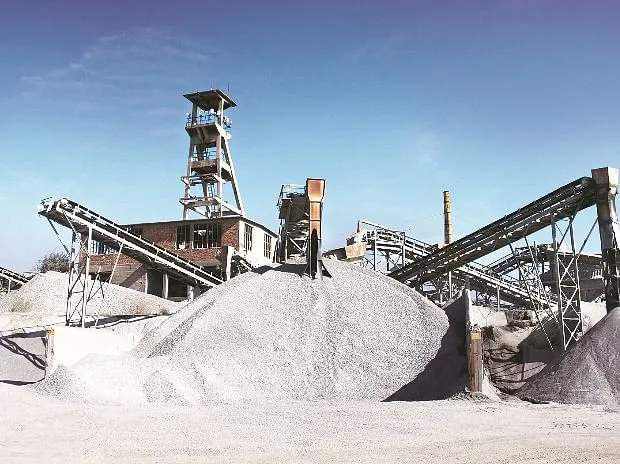To meet the increasing demand of the population, massive exploitation of environmental resources has taken place in the recent times, and is going on. Various human induced activities have direct and indirect impact on the environment. Cement manufacturing is one of such activity. Cement is an extensively used construction material. The demand for cement is high in infrastructure development. Despite its popularity and profitability, the cement industry faces many challenges due to environmental concerns, and sustainability issues. Cement industry is considered as one of the most pollution hazardous industry. Blooming of cement factories has resulted in the environmental deterioration and in turn degrades the human health status.
Cement manufacturing is a complex process that begins with mining and then grinding raw materials that include limestone, chalk, shale, clay and sand. These raw materials are quarried, crushed, and blended to the correct chemical composition. After the mining, grinding and homogenization of raw materials, the process of calcination is followed by burning the resulting calcium oxide at high temperatures to form clinker in a cement kiln; the clinker is then milled to a fine powder in a cement mill and mixed with gypsum to create cement. Manufacturing of cement requires huge amount of non-renewable resources like raw materials and fossil fuels. Raw materials and energy consumption result in emissions to air which include dust and gases. Emissions from cement manufacturing are one of the major contributors in global warming and climate change. It is estimated that 5-6% of all carbon dioxide greenhouse gases generated by human activities originates from cement production. The exhaust gas from a cement kiln contains are nitrogen oxides, carbon dioxide sulfur dioxide, carbon monoxide, fluorides, and smaller quantities of organic compounds and heavy metals. Toxic metals and organic compounds are released when industrial waste is burnt in cement kiln. Other sources of dust emissions include the clinker cooler, crushers and grinders. These emissions are not only deteriorating air quality but also degrading human health. Emissions to air is the main environmental challenge faced by the cement industry. These emissions have local and global environmental impacts resulting in global warming, ozone depletion, acid rain, biodiversity loss, reduced crop productivity etc. Recent studies determine relationship between cement air pollution and human health diseases. The results of the studies showed that these emissions are adversely affecting human health in a variety of ways like itchy eyes, allergy, respiratory diseases like tuberculosis, chest discomfort, chronic bronchitis, asthma attacks, cardio-vascular diseases and even premature death. Pollutants from cement industries are causing harmful effects on human health and environment. These emissions are toxic as it carries carcinogens, mutagens, immunotoxins, respiratory toxins, neurological toxins etc. Physical properties of such particles decide the degree of their effect on human health. The main route of dust particles in the body is the respiratory tract or the gastrointestinal tract – inhalation or swallowing. Fine particles are majorly big concern for health hazard due to their repairable nature. Workers and community’s exposure to dust emission is associated with numerous health issues. Cement dust causes lung disease, pneumoconiosis and carcinoma of the lungs, stomach and colon. Other studies have shown that cement dust may enter into the systematic circulation and thereby reach the essentially all the organs of body and affects different tissues including heart, liver, spleen, bone, muscles and hairs and ultimately affecting the physiological performance.
Nitrous oxides are produced in the combination flame of a rotatory kiln, which enter the atmosphere, and undergo many reactions in the atmosphere. These oxides react with water and other compounds to form various acidic compounds. These acidic compounds that are deposited on the earth’s surface, affect the water quality of different water bodies and acidify lakes and streams. Acidification (low PH) and the chemical changes result in making it difficult for some fish and other aquatic species to survive, grow and reproduce. Acid rain can also harm forest ecosystems by directly damaging plant tissues.
Cement industry causes a tremendous harm to ecology and environment. Emissions can have major impact on surroundings and ecology resulting in deteriorated environment. Main pollution of cement productions includes; cement dust, air pollution, noise pollution, water pollution, solid waste pollution, ground vibration and resources depletion due to raw material extraction. The main environmental problem resulting from dust emission is reduced visibility and deteriorated ambient air quality. When the dust is washed with rain, it can also pollute water bodies. Vegetation is also suffering from dust pollution due to the presence of cement factories. The dust deposition on the leaves of all plant species is highest near the cement factories. Cement dust of sufficient quantities have been reported to dissolve leaf tissues. Other reported effects of cement dust on plants include reduced growth, reduced chlorophyll, clogged stomata in leaves, cell metabolism disruption, reducing fruit setting including premature leaf fall and leading to stunted growth.
Regulatory measures are urgently required to protect the environment and human health against different types of pollutions caused by these cement industrial units. For the sustainable development it is recommended to focus on effective emission control technology, energy efficiency, and global environment friendly technologies. Stone crushing and quarrying units must install proper dust containment and water sprinkling system at different dust emitting points to arrest the escaping dust. These units must adopt some protective measures to minimize the adverse impacts of noise, dust and other types of pollution on local residents. Boundary wall must be provided and green belt along the boundary wall must be developed by the stone crushing units and there must be sustainable utilization of the natural resources. Furthermore, all cement factories must have a proper Environmental Impact Assessment. It is high time for government involvement to make sure that all the eco-friendly laws related to the production of cement dirt in the country are strictly imposed.
MARIYA BATOOL is pursuing Integrated PG in Environmental Science from the department of environmental science at SP College Srinagar






